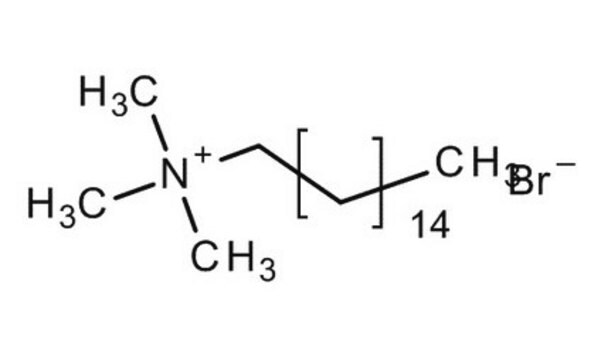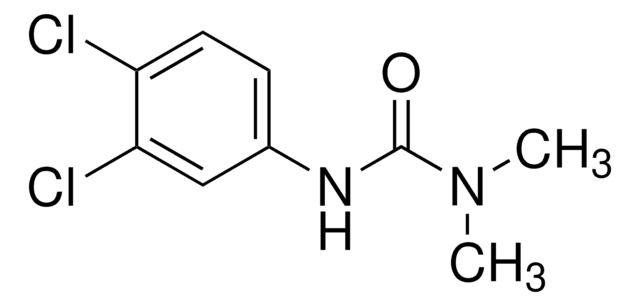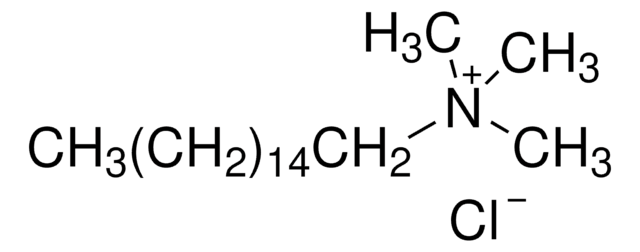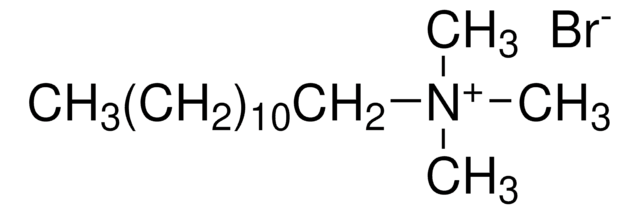36932
Esadeciltrimetilammonio bromuro
analytical standard
Sinonimo/i:
CTAB, Cetiltrimetilammonio bromuro, Cetrimonio bromuro, Palmitiltrimetilammonio bromuro
About This Item
Prodotti consigliati
Grado
analytical standard
Livello qualitativo
Descrizione
cationic
Saggio
98-102%
Durata
limited shelf life, expiry date on the label
PM
364.45 g/mol
tecniche
HPLC: suitable
gas chromatography (GC): suitable
Punto di fusione
248-251 °C (lit.)
Solubilità
H2O: soluble 36.4 g/L at 20 °C (completely)
applicazioni
cleaning products
cosmetics
environmental
food and beverages
personal care
Formato
neat
Stringa SMILE
[Br-].CCCCCCCCCCCCCCCC[N+](C)(C)C
InChI
1S/C19H42N.BrH/c1-5-6-7-8-9-10-11-12-13-14-15-16-17-18-19-20(2,3)4;/h5-19H2,1-4H3;1H/q+1;/p-1
LZZYPRNAOMGNLH-UHFFFAOYSA-M
Cerchi prodotti simili? Visita Guida al confronto tra prodotti
Descrizione generale
Applicazioni
- CTAB in various water samples by combining a dispersive liquid-liquid microextraction (DLLME) technique with high performance liquid chromatography.
- CTAB in pharmaceutical formulations by reversed-phase high-performance liquid chromatography (RP- HPLC).
Avvertenze
Danger
Indicazioni di pericolo
Consigli di prudenza
Classi di pericolo
Acute Tox. 4 Oral - Aquatic Acute 1 - Aquatic Chronic 1 - Eye Dam. 1 - Skin Irrit. 2 - STOT RE 2 Oral - STOT SE 3
Organi bersaglio
Gastrointestinal tract, Respiratory system
Codice della classe di stoccaggio
11 - Combustible Solids
Classe di pericolosità dell'acqua (WGK)
WGK 3
Punto d’infiammabilità (°F)
471.2 °F - closed cup
Punto d’infiammabilità (°C)
244 °C - closed cup
Dispositivi di protezione individuale
dust mask type N95 (US), Eyeshields, Faceshields, Gloves
Scegli una delle versioni più recenti:
Possiedi già questo prodotto?
I documenti relativi ai prodotti acquistati recentemente sono disponibili nell’Archivio dei documenti.
I clienti hanno visto anche
Il team dei nostri ricercatori vanta grande esperienza in tutte le aree della ricerca quali Life Science, scienza dei materiali, sintesi chimica, cromatografia, discipline analitiche, ecc..
Contatta l'Assistenza Tecnica.












